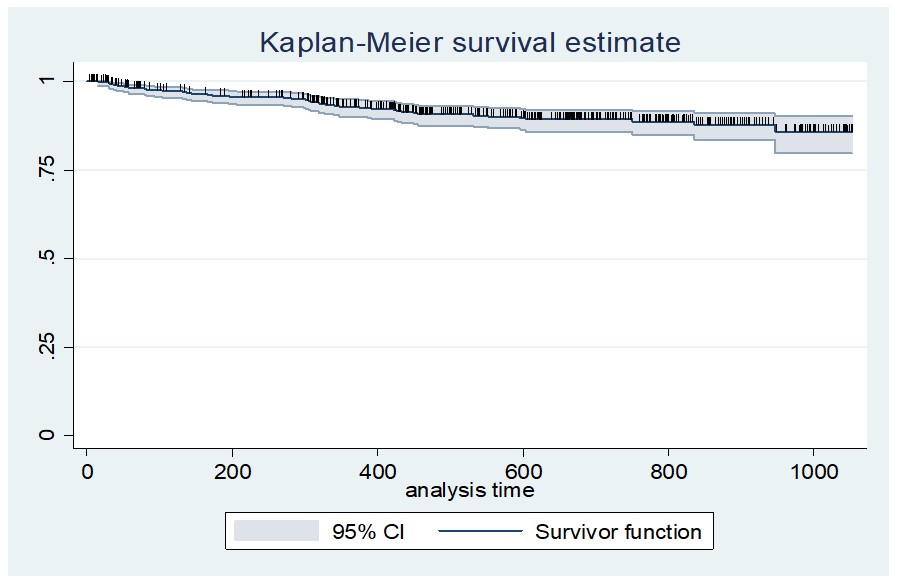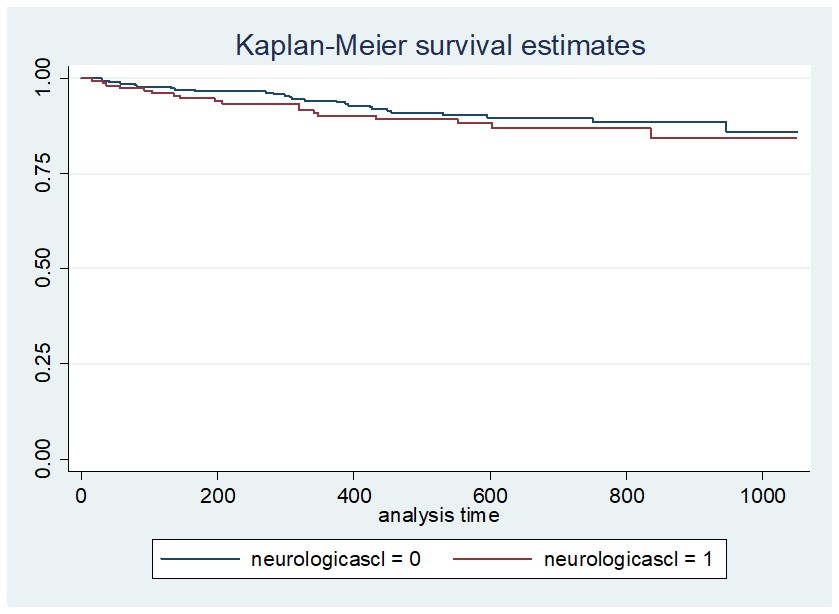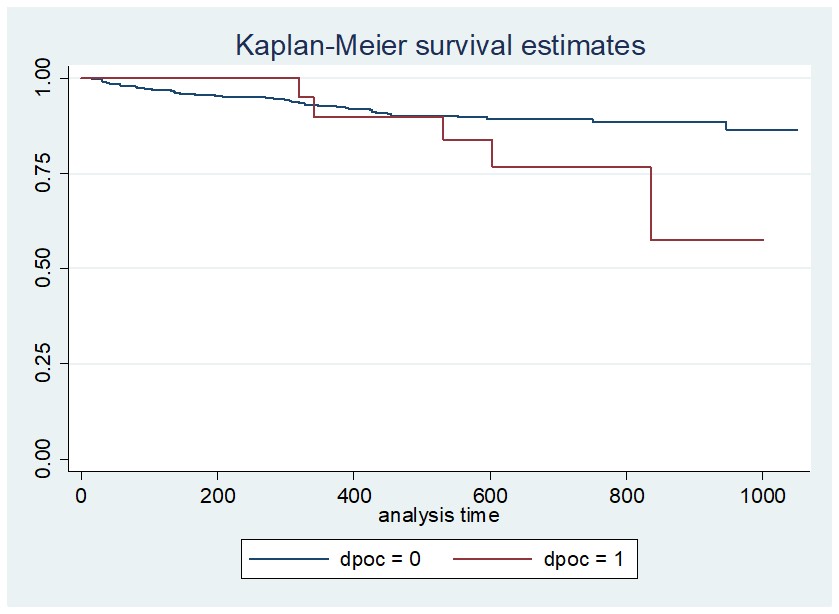Session Information
Date: Tuesday, October 23, 2018
Title: Osteoporosis and Metabolic Bone Disease – Basic and Clinical Science Poster
Session Type: ACR Poster Session C
Session Time: 9:00AM-11:00AM
Background/Purpose: Hip fractures are associated with substantially elevated morbidity and mortality and thus represent a serious public health problem. The purpose of this study is to assess cumulative refracture free survival probability and possible predictors of refracture in patients older than 65 years admitted by hip fragility fracture.
Methods: Longitudinal retrospective study of patients referred to the Rheumatology department’s Fracture Liaison Service (FLS) from march 2015 until march 2017. Demographic and clinical data were collected. Statistical analysis was performed with STATA. Survival cumulative probabilities were calculated with Kaplan-Meyer curves. Hazard ratios (HR) were calculated through cox regression, adjusted to age and degree of dependence.
Results: 522 patients were referred to the FLS, with a median age (min-max) of 84 years (65-103); 79,7% (N=416) were female. 47 out of 522 had a subsequent fragility fracture (9%). The cumulative survival probability without refracture at 1, 6, 12 and 24 months was 99,4%, (95%CI [98,2-99,8]), 96% (95%CI [93,8-97,4]), 93% (95%CI [90,2-95,0]) and 89,3% (95%CI [85,8-92,0], respectively. Neurologic disease and chronic obstructive pulmonary disease (COPD) were both predictors of worst refracture free survival outcome (HR 2,37, 95%CI [1,05-5,37] and HR 3,25, 95%CI [1,09-9,61], respectively). Gender, age, body mass index, degree of dependence, fracture and intervention type, calcium intake, sedative drugs, radiographic vertebral fractures, total femur BMD and T-score, vitamin D, osteocalcin and βcrosslaps, discharge to home or institution, supplementation with calcium and vitamin D and anti-osteoporotic treatment didn’t have significant impact on survival cumulative probabilities of refracture.
Figure 1: Cumulative refracture free survival probability
Figure 2: Cumulative refracture free survival probability
(with neurologic diseases Vs without neurologic diseases)
Figure 3: Cumulative refracture free survival probability
(with COPD Vs without COPD)
Conclusion: Knowledge of the predictors of refracture is essential for secondary prevention. Our sample suggests that neurologic disease and COPD may increase the risk of subsequent fracture after prior fragility fracture, but further studies are needed.
To cite this abstract in AMA style:
Ganhão S, Guerra M, Aguiar F, Terroso G, Vieira R, Gonçalves D, Martins-Rocha T, Ferreira R, Águeda A, Meirinhos T, Mariz E, Lucas R, Bernardes M, Vaz C, Costa L. Predictors of Refracture in Patients with Hip Fragility Fracture [abstract]. Arthritis Rheumatol. 2018; 70 (suppl 9). https://acrabstracts.org/abstract/predictors-of-refracture-in-patients-with-hip-fragility-fracture/. Accessed .« Back to 2018 ACR/ARHP Annual Meeting
ACR Meeting Abstracts - https://acrabstracts.org/abstract/predictors-of-refracture-in-patients-with-hip-fragility-fracture/



